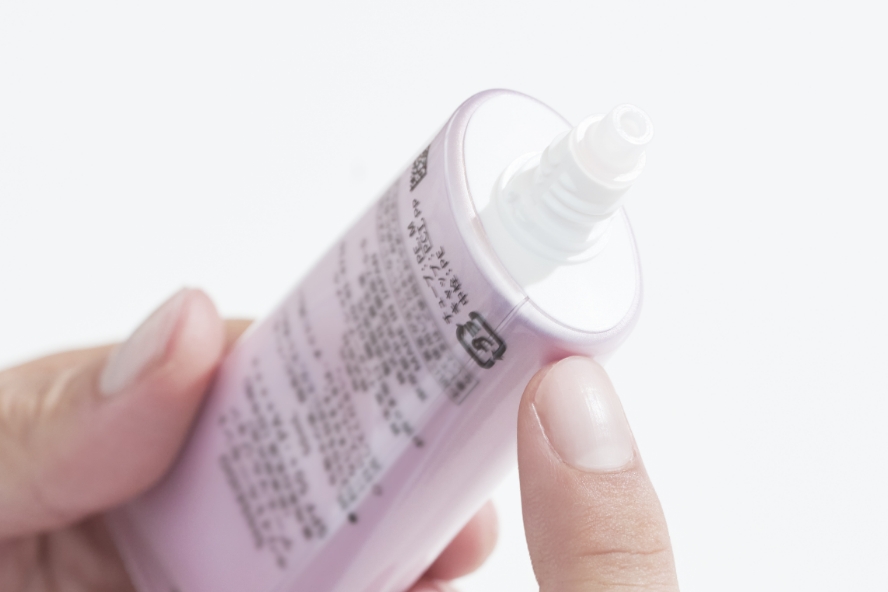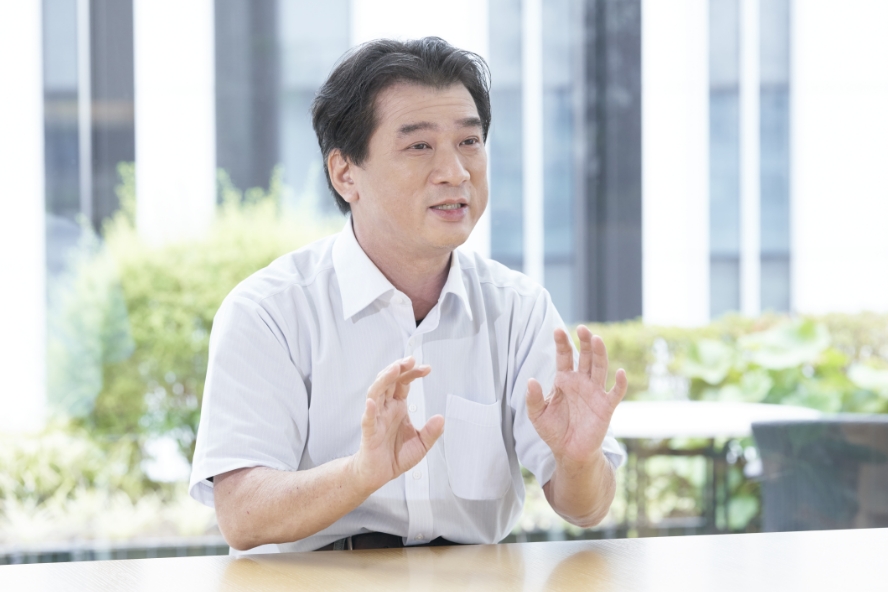- Home
- ABOUT US
- Shiseido Talks
- Recycling used plastics into cosmetics packaging A circular economy built on the cooperation of three companies and consumers
Recycling used plastics into cosmetics packaging
A circular economy built on the
cooperation of three companies and consumers
September 7, 2022

Shiseido has set a mission to achieve 100% sustainable plastic packaging by 2025 based on its unique packaging development policy “Shiseido 5Rs (Respect, Reduce, Reuse, Recycle, Replace)”. In July 2022, we took a big step toward achieving the mission by starting a collaborative initiative to establish a circular economy for plastic cosmetics containers, which are jointly promoted by SEKISUI CHEMICAL CO., LTD. (“SEKISUI CHEMICAL”) and SUMITOMO CHEMICAL COMPANY, LIMITED (“SUMITOMO CHEMICAL”) .
The recycling of plastic cosmetics containers has been considered difficult as they are made from a wide variety of plastics. Today, we interview Yoshinori Kumasaka, Group Manager of Sustainable Technology Acceleration Group at Shiseido Brand Value R&D Institute, and Kenji Ito, researcher in charge, talking about a new technology that realizes container recycling and its implementation process for the future.
Encounter with a new recycling technology for hard-to-recycle cosmetics containers
―— Please tell us about the background behind the launch of this project.

Cosmetic containers consist of various types of plastics
Kumasaka: About three years ago, when the trends toward sustainability were accelerating globally, the Packaging Materials Development Group was established as a team in charge of technology development related to packaging materials. After having a number of discussions and asking advice from various in-house departments, we set a goal of achieving 100% sustainable plastic packaging by 2025. That being said, we were at a loss, having only six years to go until 2025 with no roadmap to follow. Plus, because cosmetics containers are made of a complex combination of various plastics in order to protect the contents while maintaining the design, it was almost impossible to sort and recycle them properly. Just as we said, “Let's do it!”, I was already daunted facing with the reality full of difficulties lying ahead.
―In such a situation, how did you come up with the idea of collaboration?
Kumasaka: Although my mind was filled with the challenges that kept popping up one after another, I stayed on the lookout, actively visiting various lectures outside the company in search of a clue to the solution. Then, I came across the “BR Ethanol Technology*1” developed by SEKISUI CHEMICAL. This technology allows plastics of all sorts to be recycled without sorting. When I encountered this technology, I was thrilled at the thought that this technology would save us outer packaging designers because with this technology, there will be no restrictions on the designing of cosmetics containers. I was so excited and kept note of the information on the presentation screen. Then, immediately afterword, I contacted SEKISUI CHEMICAL, which is how the project kicked off.
- *A technology that gasifies combustible waste collected from households without sorting and converts the gas into ethanol using microbes without application of heat or pressure. BR stands for biorefinery.

Yoshinori Kumasaka
Group Manager, Sustainable Technology Acceleration Group, Shiseido Brand Value R&D Institute
First step toward a “circular economy” of three-company collaboration
―How does the SEKISUI CHEMICAL’s recycling system work?
―What was the distinction from the conventional recycling system?
Start with what we can. Facing the difficulties while pursuing the plan.
―Was this technology ready to be implemented immediately?
- 1. Find a means to convert ethanol to polyethylene resin.
- 2. Use recycled polyethylene for the containers of Shiseido products.
- 3. Shiseido collects containers via retail stores to support the project.
Once these three targets are agreed upon, the system for recycling plastic cosmetics containers will be established. In July 2019, we got started, going all out toward this goal.
―What actions did you actually take toward these targets?
―Then, that is how the three-company collaboration with SEKISUI CHEMICAL and SUMITOMO CHEMICAL began, advancing the cross-sectoral collaboration, right?

―I’ve heard that you are working closely with other in-house departments to advance this project. Is that true?

Kenji Ito
Sustainable Technology Acceleration Group, Shiseido Brand Value R&D Institute
Ito: Yes, at the Institute, we do basic research and product development, but we do not have any know-how regarding in-store operations. So, we discuss and cooperate with Shiseido Japan teams who are actually in charge of in-store operations such as sales, logistics, and others. Actually, we had a series of difficulties until we established the project structure. This project is inevitably costly, and new operations will be required at the storefronts. However, instead of worrying about these negative factors, I tried to deepen the understanding within the company by carefully explaining that Shiseido’s contribution and leadership in circular economy would help create the corporate image of leading sustainable activities in the industry and boost consumers’ appetite, making people more willing to buy Shiseido products in the future. We will break through difficulties through “knowledge fusion” from various perspectives, which is another rewarding aspect of this project.
―Are there any differences in viewpoint and sense of trouble/challenge among the departments?
―Are you actually taking any concrete actions toward in-store collection?
In the near future, this project will change the earth and people.
―Once this project is realized, how do you think society will change?
―Finally, what do you think of the significance of this project? What are your thoughts?
Related news
Shiseido, SEKISUI CHEMICAL, and SUMITOMO CHEMICAL to Collaborate in Building a Circular Economy for Plastic Cosmetics Containers
ABOUT US
- Who we are
- History
- Profile
- Governance
- Quality Management
- Supply Network
- Region/Business
BRANDS
- Prestige
- Premium
- Inner Beauty
- Life Quality Makeup
SUSTAINABILITY
- Strategy / Management
- Society
- Environment
- Governance
- Reports / Data
- Related Information
INNOVATION
- Research and Development
- Research Areas
- Research outcomes
- Product safety
- Product Development Policy
- Initiatives for doctors and researchers
CAREERS
INVESTORS
- IR Library